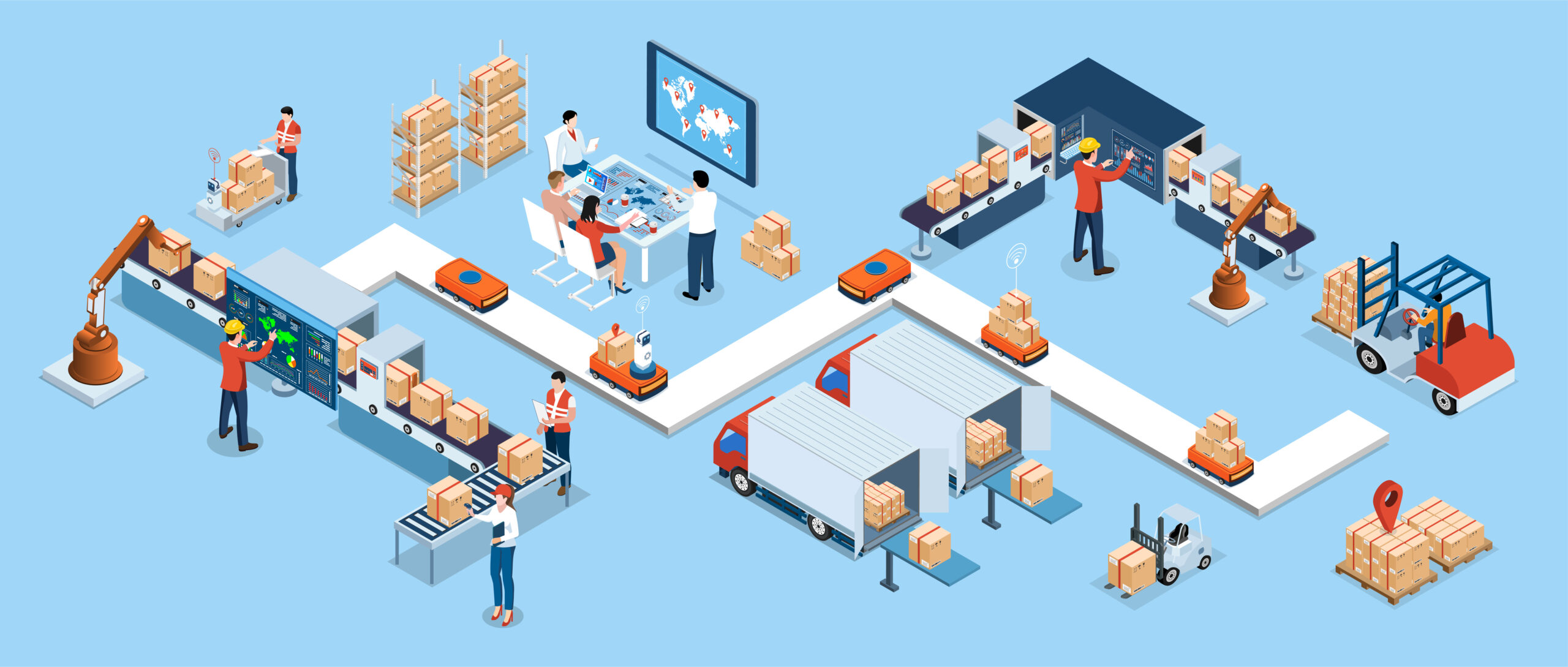You’ve finished your WMS vendor selection and you are ready to start the design phase for your software solution. Your supply chain transformation is underway! How can you make sure you’re set up for success?
Managing change in a successful supply chain transformation comes down to a familiar four things: people, process, technology, and data.
Your vendor design architect seeks to marry the people and process of your operation with the technology and data of their solution to strike that sweet alchemy of a successful technology transformation. Even the best vendor design architects focus primarily within the boundaries of their application. They focus on designing a technology solution that delivers the features the customer expects and integrates cleanly with other solutions. That scope boundary includes an inherent assumption: that the vendor design architect’s responsibility ends at the boundary of their application. Of course, they want their customers to be successful holistically, but their primary focus will be on their application. That leaves a potential gap where the software ends, and your operational process begins.
What’s left in the cracks of that boundary focus? Let’s start with customizations. Software vendors look to meet every distinct customer demand through their base solution, but sometimes unique needs require additional configuration or custom development. A partner-enabled pre-design phase can help you identify potential extensions or modifications in advance of your vendor design conversation so that you can come prepared with realistic expectations of scope, cost, and timeline. They can think through workarounds and potential process changes with you in advance outside the murky incentives of custom development and its impact on budget and timeline.
Beyond just customizations, a partner-enabled pre-design can help consider the impact of design decisions on other parts of the operation. Deploying complex technology solutions like a WMS alongside other complex technology can result in unexpected effects. An experienced, objective consultant can help think through how WMS design decisions will affect other parts of your operation. How will this ecommerce design decision affect your B2B operation? Will shifting more volume through an automated process overwhelm the automation? What happens if a box arrives at an overhead scanner before the automation expects it? Will changes in your fulfillment strategy in your OMS force changes in your labor planning at the warehouse?
These types of complex design decisions can take time to make. Different organizations with different operating models manage decision making and governance in different ways. Organizations with consensus-based governance may take more time to align on key design decisions. No one wants a rushed decision or an extended design phase. A pre-design process gives the team a head start by identifying key decision points early and allowing the team to work through the impact of those key decisions before engaging a vendor design architect. Considering key decisions early helps keep design phase as focused and efficient setting your implementation up for success on the front end.
Your vendor-led design may meet the requirements of today, but what about tomorrow? An objective design consultant can view your design through the lens of your operational process and map out a design approach that meets your unique business needs. They can think through your operational strategy over time and identify potential challenges that may come through changes in your business model.
What about the implementation? A partner consultant can help you think through your responsibilities in a successful implementation including testing, training, and change management to ensure that you have a team ready to deploy to fulfill your end of the bargain.
An objective design consultant offers a knowledgeable second set of eyes, someone who knows your current-state process requirements and your future business strategy. A design consultant partners with you to lay a design foundation that meets the unique and specific needs of your business today and builds resilience to meet the challenges your business will face in the future.
Contributor: Eric Schwartz, Director of Services at Bricz
